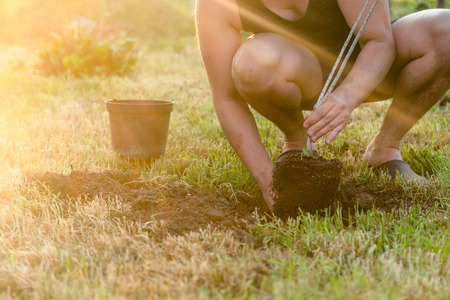Introduction to Seasonal Outdoor Lighting
Outdoor lighting does more than just brighten up your yard—it plays a key role in showing off the beauty of your landscaping all year round. Whether it’s the warm glow on fall leaves, twinkling lights on winter trees, or soft illumination on spring blooms, the right lighting can transform your outdoor space and make it feel inviting no matter the season.
Each season brings its own unique colors, textures, and features to your yard. By using targeted lighting techniques, you can highlight these changes and create different moods that suit the time of year. From garden beds and walkways to trees and patios, lighting helps define your landscapes best features while adding safety and functionality after dark.
Why Seasonal Lighting Matters
Outdoor lighting isn’t just for holidays or special events—it’s a tool that helps you enjoy your landscape every evening, regardless of the season. It adds character and charm while also increasing curb appeal and home value. Plus, seasonal lighting allows you to shift the focus of your yard with each passing season.
Benefits of Seasonal Outdoor Lighting:
| Season | Lighting Focus | Effect |
|---|---|---|
| Spring | Flower beds, budding trees | Highlights new growth and fresh colors |
| Summer | Patios, water features | Creates a lively and welcoming atmosphere for gatherings |
| Fall | Foliage, ornamental grasses | Adds warmth and depth to seasonal colors |
| Winter | Trees, architectural features | Adds drama and sparkle during darker months |
Tip:
Use adjustable LED spotlights and timers to make transitioning between seasons easier without needing to reinstall fixtures.
2. Choosing the Right Lighting for Each Season
Outdoor lighting can do more than just brighten your yard — it can bring out the best in your seasonal landscaping. By selecting the right lighting styles, colors, and intensities for each time of year, you can enhance the natural beauty of your garden while creating an inviting atmosphere.
Spring: Softly Highlighting New Growth
In spring, gardens come alive with fresh blooms and delicate greenery. Use warm white or soft yellow lighting to gently accentuate flowering trees, budding shrubs, and early perennials. Low-intensity spotlights or path lights work well to highlight these features without overwhelming their subtle charm.
Recommended Spring Lighting
| Lighting Type | Color Temperature | Best Use |
|---|---|---|
| Path Lights | 2700K – Warm White | Walkways, flower beds |
| Small Spotlights | 3000K – Soft White | Budding trees, garden accents |
Summer: Enhancing Lush Greens and Outdoor Living Spaces
Summer brings dense foliage and vibrant outdoor activity. Brighter lighting with slightly cooler tones (around 3000K to 3500K) can help define spaces like patios and decks while still showcasing plants. Consider using string lights or lanterns for festive ambiance during long summer evenings.
Recommended Summer Lighting
| Lighting Type | Color Temperature | Best Use |
|---|---|---|
| String Lights | 3000K – Soft White | Patio areas, pergolas |
| Flood Lights | 3500K – Neutral White | Larger trees, garden walls |
Fall: Accentuating Rich Colors and Textures
The deep reds, oranges, and yellows of fall foliage shine under warm-toned lighting. Use uplights to emphasize trees with colorful leaves or low-placed lights to illuminate textured bark and ornamental grasses. Amber filters can also enhance the cozy feel of autumn evenings.
Recommended Fall Lighting
| Lighting Type | Color Temperature / Filter | Best Use |
|---|---|---|
| Uplights with Amber Filters | 2700K + Amber Filter | Tall trees, colorful foliage |
| Bollard Lights | 2700K – Warm White | Garden paths, decorative grasses |
Winter: Creating Drama with Shadows and Silhouettes
In winter, when most plants are dormant and landscapes become minimalist, focus on structure and contrast. Cool white lighting (around 4000K) can add a crisp look that complements snow or bare branches. Use spotlighting to cast dramatic shadows on fences or walls for visual interest.
Recommended Winter Lighting
| Lighting Type | Color Temperature | Best Use |
|---|---|---|
| Narrow Beam Spotlights | 4000K – Cool White | Bare trees, architectural features |
| Solar Ice Lights or LED Accents | Crisp White or Blue Tint | Shrubs, evergreen accents, snow highlights |
Selecting the right outdoor lighting based on the season helps bring out your landscape’s best features all year round. Whether youre highlighting blooming tulips in spring or casting elegant shadows in winter, tailoring your lighting choices will make your yard feel alive in every season.
![]()
3. Highlighting Key Landscape Features
Outdoor lighting is a powerful tool for showcasing the best parts of your seasonal landscaping. By focusing on key elements like trees, flower beds, hardscapes, and water features, you can create a warm and inviting atmosphere that changes beautifully throughout the year. Here’s how to use lighting strategically to bring out the natural beauty of each feature.
Trees
Trees are natural focal points in any yard, especially when their leaves change color or when they’re covered in snow or blossoms. Use uplighting at the base of the trunk to cast dramatic shadows and show off the tree’s shape. For taller trees, moonlighting—placing lights high in the branches to shine downward—can mimic natural moonlight and create a soft glow below.
Flower Beds
During spring and summer, flower beds burst with color and texture. Use low-level path lights or small spotlights angled slightly downward to highlight these areas without overwhelming them. This not only enhances their appearance at night but also adds safety along walkways.
Hardscapes
Patios, retaining walls, stone paths, and other hardscape elements offer structure to your landscape design. Accent lighting like wall washers or recessed step lights can add depth and make these surfaces pop after dark. Lighting also helps define spaces for entertaining or relaxing outdoors.
Water Features
Ponds, fountains, and waterfalls can become magical focal points with proper illumination. Submersible lights can be placed under water to give it a glowing effect, while spotlights from the side can highlight movement and reflections. Be sure to use waterproof fixtures designed for outdoor use.
Quick Guide: Lighting Techniques by Feature
| Landscape Feature | Recommended Lighting | Effect Created |
|---|---|---|
| Trees | Uplighting, Moonlighting | Dramatic shadows, natural glow |
| Flower Beds | Path lights, Spotlights | Soft highlights, improved visibility |
| Hardscapes | Wall washers, Step lights | Depth and structure after dark |
| Water Features | Submersible lights, Spotlights | Glowing water effects and reflections |
The right lighting not only makes your landscape safer but also transforms it into a year-round visual delight. Whether youre enjoying a summer evening barbecue or watching snow fall across your garden in winter, highlighting key features keeps your outdoor space looking its best in every season.
4. Energy-Efficient and Weather-Resistant Lighting Options
When it comes to highlighting your seasonal landscaping, choosing the right outdoor lighting is just as important as your plant selections. Not only do you want your yard to look stunning year-round, but you also need lighting that can handle everything from summer heatwaves in Arizona to snowy winters in Minnesota. Let’s explore some energy-efficient and weather-resistant options that are perfect for American climates.
Low-Voltage Lighting: Safe and Efficient
Low-voltage lighting is a popular choice for homeowners who want an affordable and safe way to light up their landscapes. Operating at just 12 volts, these lights use less energy than traditional systems and are easier to install without the need for professional wiring.
Benefits of Low-Voltage Lighting:
- Energy-efficient and cost-effective
- Safe for homes with kids and pets
- Ideal for path lights, garden beds, and accent lighting
Solar Lighting: Harnessing the Power of the Sun
If youre looking for a sustainable option that’s easy to install, solar lights are a great pick. They charge during the day and automatically turn on at night, making them perfect for walkways, patios, and highlighting seasonal garden features.
Pros of Solar Lights:
- No wiring required—just place them where they’ll get sunlight
- Eco-friendly with no energy bills
- Great for mild climates with plenty of sun
LED Lighting: Bright, Long-Lasting, and Durable
LED lights are known for their brightness and long life span, which makes them ideal for all-season landscape lighting. Theyre available in a variety of styles and colors to complement any outdoor space.
Why Choose LED?
- Uses up to 80% less energy than incandescent bulbs
- Lifespan of up to 50,000 hours
- Performs well in extreme weather conditions—from freezing cold to scorching heat
Quick Comparison Table
| Lighting Type | Main Benefit | Best For | Weather Resistance |
|---|---|---|---|
| Low-Voltage | Safe & energy-efficient | Accent lighting & pathways | Good across most U.S. climates |
| Solar | No electricity needed | Walkways & sunny areas | Best in sunny regions like the Southwest or Southeast |
| LED | Long-lasting & durable | All-purpose outdoor lighting | Excellent in all weather conditions coast-to-coast |
Selecting the right type of lighting not only enhances your seasonal landscaping but also ensures your investment lasts through rain, snow, wind, or shine. Whether youre showcasing fall foliage or spring blooms, these energy-efficient solutions will keep your yard looking its best while keeping your utility bills low.
5. Practical Tips for Safe and Easy Installation
Installing outdoor lighting to showcase your seasonal landscaping can truly transform your yard, but safety and ease should always come first. Here are some practical tips to help you get started with confidence.
Choose the Right Lighting Fixtures
Select weather-resistant, outdoor-rated lighting fixtures designed to withstand the elements. Look for LED options—theyre energy-efficient, long-lasting, and available in a variety of styles that complement seasonal displays.
Understand Basic Wiring Techniques
If youre installing low-voltage lighting, youll need a transformer and low-voltage wire. Always turn off power before working with wiring. For most DIY setups:
- Use 12-gauge wire for longer distances or more lights.
- Bury wires at least 6 inches deep or use protective conduit.
- Connect lights using waterproof connectors to avoid corrosion.
Follow Recommended Spacing Guidelines
Proper spacing ensures your landscape is evenly lit without overpowering certain areas. Use this quick guide to determine how far apart to place your lights:
| Light Type | Recommended Spacing |
|---|---|
| Path Lights | Every 6–8 feet |
| Spotlights (for trees & structures) | 5–10 feet from target |
| Flood Lights | Around 20 feet apart |
Add Smart Lighting Features
Smart outdoor lights give you control from your smartphone and can be scheduled to adjust with the seasons. Choose systems compatible with Alexa, Google Assistant, or Apple HomeKit for easy integration. Many smart transformers also allow zone control, so you can highlight spring blooms or fall foliage as needed.
Benefits of Smart Integration:
- Automated on/off schedules based on sunset/sunrise
- Dimming capabilities for mood-setting
- Create scenes for different seasons or events
Stay Safe During Installation
If youre unsure about wiring or electrical connections, consult a licensed electrician. Also, be sure to:
- Avoid overloading circuits—calculate total wattage before installing multiple fixtures.
- Keeps cords and wires away from foot traffic areas to prevent tripping hazards.
- If using extension cords temporarily (like during holidays), make sure theyre rated for outdoor use.
This careful planning will not only enhance the look of your seasonal landscaping but also ensure your lighting setup is functional, safe, and built to last all year round.


